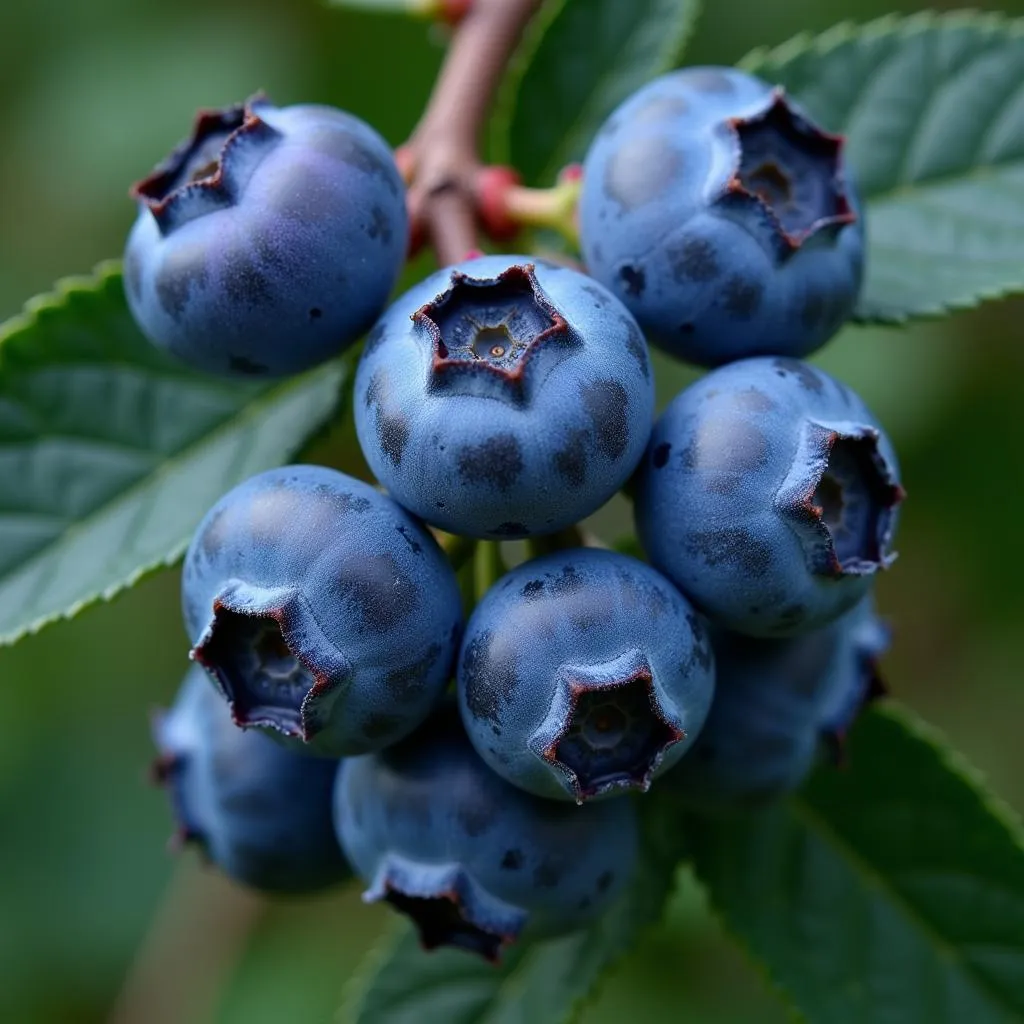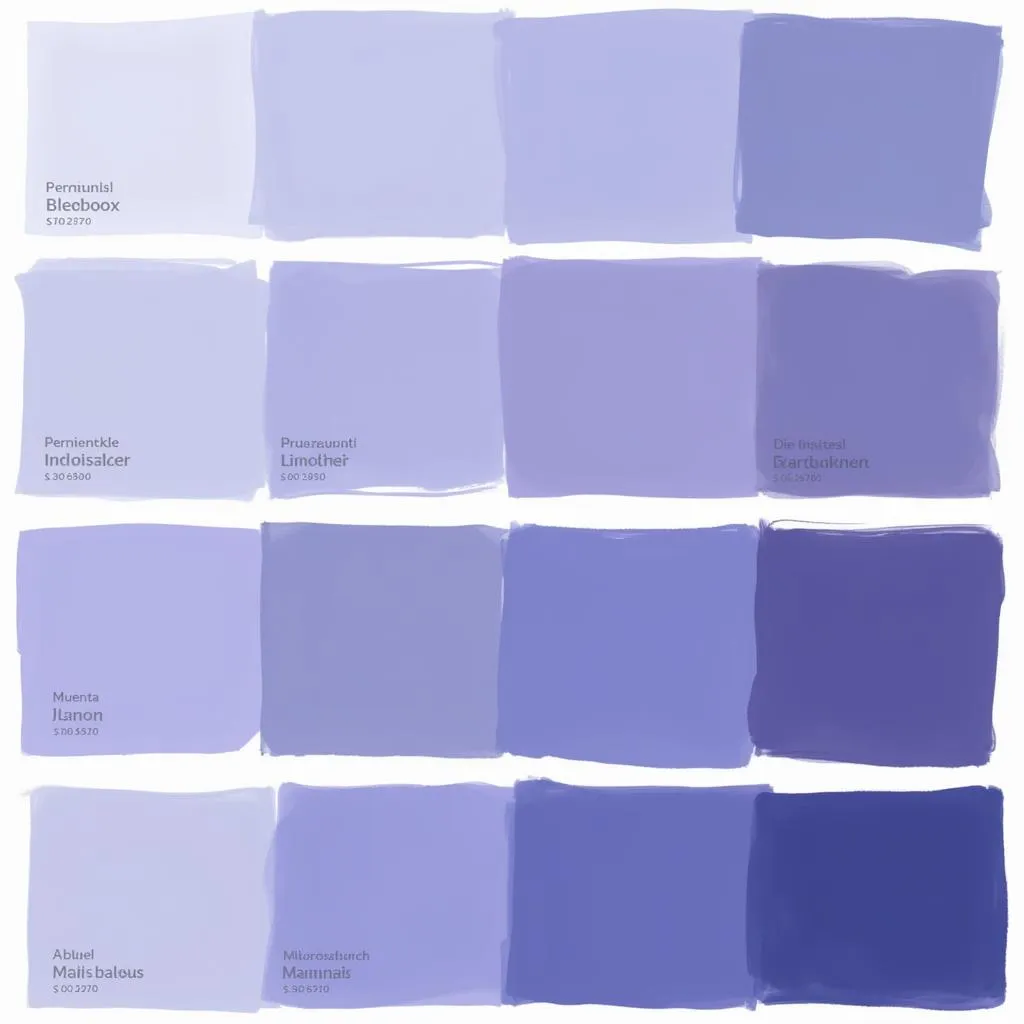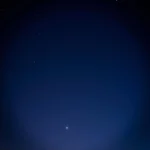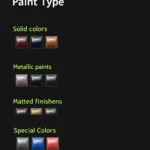Blueberry is a popular fruit known for its sweet and slightly tart flavor, but have you ever stopped to consider its distinctive color? While we often call it “blue,” the color of a blueberry is actually quite complex and nuanced.
Delving into the Depths of Blueberry Color
Contrary to its name, a blueberry isn’t exactly blue. Its color is closer to indigo or deep purple with a slight reddish undertone. The deep, rich hue comes from natural pigments called anthocyanins, which are found in the skin of the fruit.
These pigments are responsible for a wide range of colors in nature, from the vibrant red of strawberries to the deep purple of eggplants. The specific type and amount of anthocyanins present determine the exact shade of a blueberry.
Factors Influencing Blueberry Color
Several factors can influence the color of blueberries, including:
- Variety: Different blueberry varieties naturally have varying levels of anthocyanins, leading to slight color differences. Some might lean towards a bluer shade, while others exhibit a more pronounced purple hue.
- Ripeness: As blueberries ripen, their color intensifies. Unripe berries appear greenish-purple, gradually deepening to a rich indigo as they mature.
- Growing conditions: Sunlight exposure, temperature, and soil pH can all affect anthocyanin production and, consequently, blueberry color.
 Ripe blueberries on a branch
Ripe blueberries on a branch
The Versatility of Blueberry in Color Palettes
The complex color of blueberries offers a surprisingly versatile range for design and art.
- Complementary Contrasts: The deep blue-purple of blueberries creates a striking contrast when paired with warm colors like orange, yellow, and coral. This combination is visually dynamic and evokes feelings of energy and excitement. Think of a vibrant sunset over a field of blueberry bushes.
- Analogous Harmony: For a more serene and calming effect, consider combining blueberry with neighboring colors on the color wheel, such as violet, lavender, or teal. This creates a sense of harmony and visual flow.
- Monochromatic Depth: Utilizing different shades and tones of blueberry itself can create a monochromatic color scheme that is both sophisticated and visually engaging. Imagine a room with walls painted a light periwinkle, accented with deeper blueberry furniture and accessories.
 Blueberry color palette
Blueberry color palette
More Than Just a Pretty Fruit
Beyond its aesthetic appeal, the deep color of blueberries signifies a high concentration of antioxidants, particularly anthocyanins. These beneficial compounds are linked to various health benefits, including improved cognitive function, heart health, and reduced risk of certain diseases.
“The color of blueberries is a testament to their nutritional power,” says Dr. Anna Roberts, a leading nutritionist. “The deeper the color, the higher the concentration of these health-boosting antioxidants.”
Exploring Related Color Queries
The world of color is vast and fascinating. If you’re intrigued by the nuances of blueberry color, you might also be interested in exploring:
- What is berry color? This article delves into the diverse color palette found within the berry family.
- How to make the color turquoise icing Discover how to create vibrant turquoise icing for your next culinary creation.
Blueberry Color: A Final Word
While simply calling it “blue,” the color of a blueberry is a captivating blend of indigo, purple, and reddish hues. This complex color is not only visually appealing but also a testament to the fruit’s nutritional value. Whether you’re drawn to its beauty or its health benefits, there’s no denying the allure of this tiny, powerful fruit.
Do you have a color query you’d like us to explore? Reach out to our team at 0373298888, email us at [email protected], or visit us at 86 Cầu Giấy, Hà Nội. We’re here to help you navigate the world of color!

